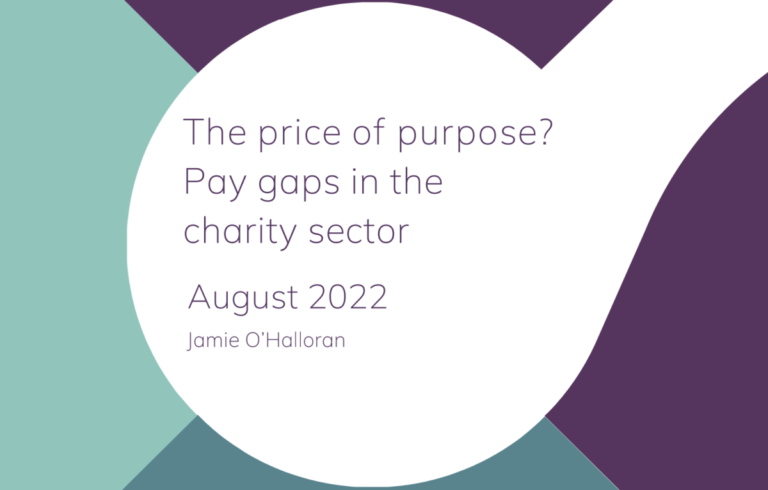Charity staff paid 7% less than workers in other sectors

Analysis for the Law Family Commission on Civil Society has quantified the size of the pay gap between the charity sector and the rest of the economy for the first time.
The study, carried out by Pro Bono Economics, found that charity sector employees were collectively paid an estimated £1.5 billion less than their counterparts in other sectors in 2019. Meanwhile, recent Bank of England data showed that the cost of living crisis is causing the pay gap to grow – with average wages rising in the year to May 2022 by approximately 3.8% among charities, compared with 5.6% for businesses.
Four in five charities already say they are struggling to recruit at present.
Advertisement
Key findings
The Pro Bono Economics analysis for the new Commission report (written by Jamie O’Halloran), The price of purpose? Pay gaps in the charity sector, is drawn from the largest household survey in the UK, and shows the size of the charity sector pay gap grows as people age. For those in their early 20s, the gap is 2.7%. But for charity workers aged between 36 and 40, their pay is 8.4% less on average than the rest of the economy, growing to 9.4% for those aged 46-50 years old.
According to the study, charity workers with higher qualifications experience a bigger difference in their pay than those with lower qualifications, with graduates earning an average £40,000 less over their working lifetimes than their similarly qualified peers in the rest of the economy.
The analysis also identified that the charity sector itself continues to endure a gender pay gap, with female workers earning 4.1% less per hour on average than their male colleagues.
However, the research found that men working in the charity sector experience a larger pay gap relative to non-charity workers than women working in the sector. On average, male charity workers earn 12.3% less per hour than similarly qualified men working across the rest of the economy, while female charity workers earn 4.7% less than their counterparts in other sectors.
Jamie O’Halloran, Economist at Pro Bono Economics, said:
“For the first time ever, this research puts a number on the size of the enduring pay gap between the charity sector and the rest of the economy.
“Charity pay has long been a subject that provokes strong reactions. It is a complex topic, and people are passionate about ensuring that the money they donate makes the biggest impact possible to the causes and groups that they support. Proper investment in staff is one of the ways that money can be put to the greatest possible use.
“As an employer, the charity sector does not sit in isolation; it has to compete with the rest of the economy for staff and it relies on the fundraisers, volunteer managers and service delivery professionals whose work sustains it.
“The widening pay gap identified in this research poses a serious threat to the sector and its impact, especially during a cost of living crisis. Lagging pay could lead to an exodus of talented staff and acts as a barrier to many from diverse backgrounds considering a career in the sector.
“Amid soaring inflation and with a recession predicted, the economic challenges faced by charities are compounded by the issues created by low pay, at exactly the time the nation needs the sector to be firing on all cylinders.”
Commenting on the report, Neil Heslop OBE, Chief Executive of the Charities Aid Foundation said:
“This helpful new data provides insight for charity leaders as they consider the challenges to come over the next year. Charities are under significant pressure to meet increasing demand from their communities due to the cost-of-living crisis, whilst being impacted on many fronts by rising costs and significant wage pressures themselves. Our own research found that four in five (80%) charity leaders are concerned about managing demands for higher wages from staff.
“Volunteers and workers in the charity sector are largely driven by a desire to help people and make a difference. But they face the same concerns as those in other sectors about how they can continue to look after their families experiencing rapidly rising bills.”





